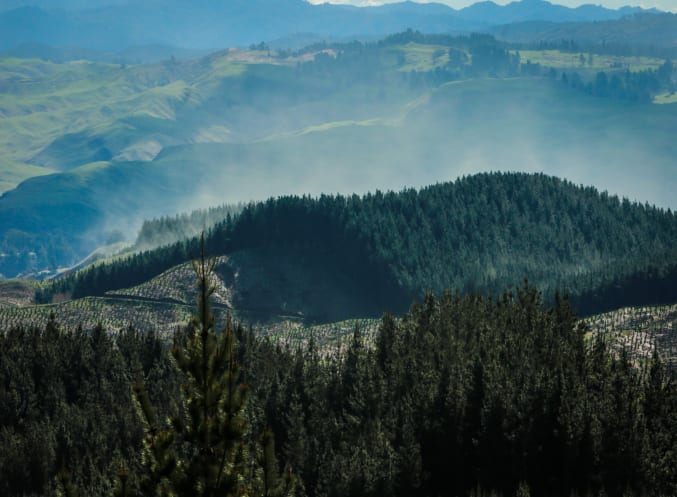Ewan McGregor is a Central Hawke’s Bay farm forester, former deputy chairman of the HBRC, and a former president of HB Federated Farmers.

The advance of the pine army of occupation is like the weather; it seems everyone complains about it but no one gets to fix it. This profound, and essentially permanent, change of our rural landscape has become alarming. What are we going to do about it? Should we do something? Can we? I think we should, and we can. But it will need to be led from Wellington.
Land use is in a constant state of flux everywhere around the word. New Zealand is no exception. Now that change here is hastening, and in a way that will not just change the face of the land, but its social imprint too.
Our first land use change was the bush clearance to make way for grass. Actually, this was the creation of a land use as the magnificent native bush that clothed our land was not a “use”, but the exploitation of the easily accessible, magnificent timber trees. Fire followed, taking with it much timber as well, where logs where irrecoverable given the technology of the day.
Land use initially was the production of wool - a sought-after commodity that was not perishable and thus able to be shipped across the world to the Bradford mills. The arrival of refrigerated shipping added meat and dairy production to our exports. Thenceforth, the use of the greater portion of the nation’s landscape was devoted to pasturage for sheep and cattle. Today wool has lost its lustre, but dairy product and meat represent our two most valuable merchandise exports. The third, and it’s significant, is wood – read pine – products.
Pine plantings began following World War I, mainly in the central North Island, coming into production after World War II. Since then, this has been added to with extensive plantings over land erodible under pasture, and woodlots on farms.
This pine estate is now being extended, and with alarming speed, with the acquisition of stable farmland of easy contour by forestry interests, largely foreign ones. This is sweeping aside not just the farming industry in those areas, but the social foundation, with its resident communities and pride of ownership that goes with it. Gone too will be the open and scenic pastoral vistas unique to New Zealand.
Once planted, is this land use change irrevocable? As far ahead as we can see, I believe it is. Over the life of our farming landscape we have seen usage change; maybe from sheep and beef to dairying, or to horticulture/viticulture, or intensive cropping. This has not been frustrated legally beyond environmental imperatives. But the pine invasion is different. A single rotation takes about 30 years, and given that the land is held by non-domiciled forestry interests, it will likely be replanted.
But there’s another factor driving this, and it is through the justifiable concern at global climate change. This has led to the well-intended encouragement to get more trees on to the landscape through the Emissions Trading Scheme, where growing trees is rewarded in cash payments. This is adding to the drive for blanket radiata forests.
Well, climate change or not, the ever-growing world population needs to be fed.
Don’t get me wrong; radiata, given our climate and soils, is an extraordinary timber tree species. Our plantations are admired by global foresters. But we need to control their expansion. Currently they are controlling us.
There are ways of safeguarding our farming industry and integrating trees into it, thereby safeguarding our economy, environment, scenery and rural society. But that’s a case for another day. In the meantime, the need to control this issue is a matter of the utmost urgency.











11 comments
Ewan has spent a life time experimenting with alternative species to pine trees that, if managed in a certain way, have real market potential - and I would suggest that the blanket cover with radiata forest is certainly over.
Here on the East Coast, farmers and foresters alike agree that we can’t continue abusing the environment in the way we have been and so we are all committed to reduce our current activity until we reach a balance where both industries can peacefully co-exist with our environment for the betterment of all concerned.
In many areas the changes have already been made or are on the community plan waiting for the next opportunity.
Also, any particular type of land use doesn’t have to be permanent - including pine plantations.
Look at the large areas of easy country on the Rotorua / Taupo highway where forests have been successfully returned to dairy farming.
Other parts of the Volcanic Plateau have carried out similar conversions.
So it really is up to us as to whether we accept what could happen if we do nothing, or take responsibility for our own mistakes by striking out in a new direction - confident in our ability to make the changes necessary.
It is something that, due to a number of compelling reasons, we can’t afford not to do.
A no-brainer really.
JOIN THE CONVERSATION
Read and post comments with a
Newsroom Pro subscription.
Subscribe now to start a free
28-day trial.